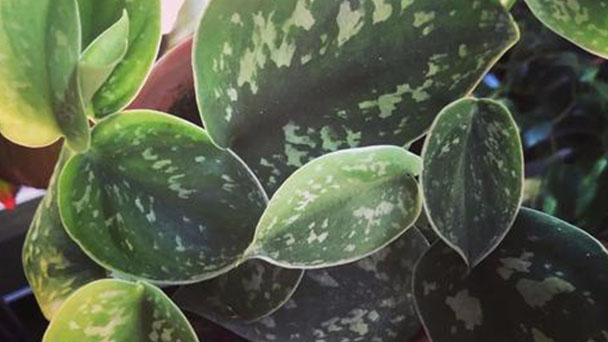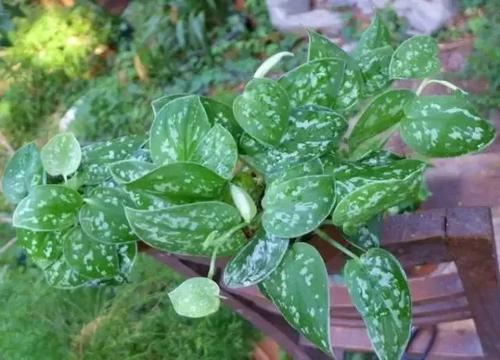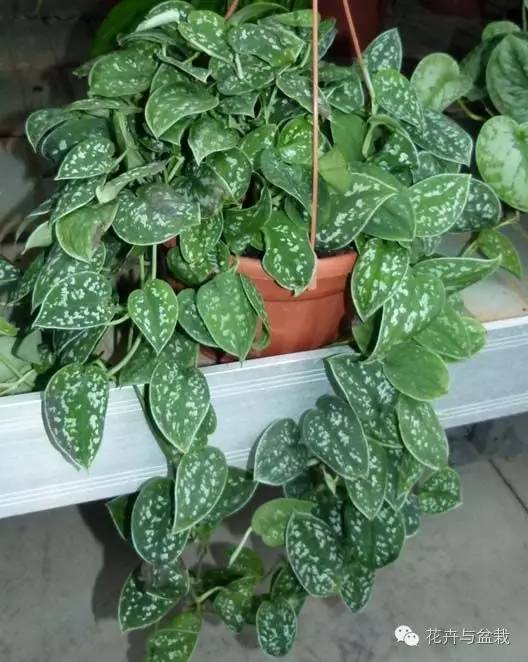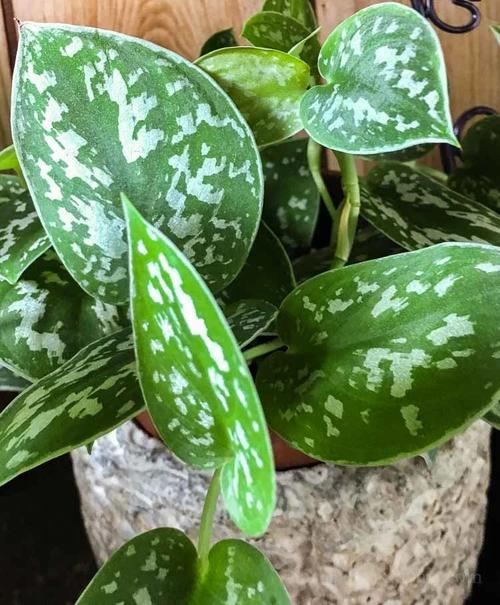Scindapsus pictus (satin pothos) profile
Written by Maggie
Nov 01 2021

The leaves of Scindapsus pictus (satin pothos) are fleshy, round or oblong, cordate, and apically acute. Leaf is velvety green, and full of silver-green patches or spots, elegant and beautiful.
Scindapsus pictus picture

Morphological characteristics of Scindapsus pictus
The leaves of Scindapsus pictus (satin pothos) are fleshy, round or oblong, cordate, and apically acute. Leaf is velvety green and full of silver-green patches or spots, elegant and beautiful.
The ecological habits of Scindapsus pictus
The stem of Scindapsus pictus (satin pothos) is tendrilous, with seasonal air roots, which can climb to serpent posts, tree trunks and rocks. It is tolerant to shade and likes a warm environment. The lowest wintering temperature is 16℃. Scindapsus pictus (satin pothos) likes a half shade environment; Scindapsus pictus (satin pothos) grows well in bright rooms; Good Mosaic varieties die easily in low light conditions. Spring, summer and autumn 3 seasons in the basin soil to have enough water, basin soil surface 1-2 cm dry water; Low winter temperature should reduce watering. Scindapsus pictus (satin pothos) likes high temperature and high humidity; Water the plants frequently. Repot: Repot as needed in the spring.
How to grow and care for Scindapsus pictus
Light
Give Scindapsus pictus bright, oblique mild year-round. Harsh direct daylight will scorch its leaves, whilst too-little mild will motive the leaves to lose their variegation.
Water
Water completely and permit the pinnacle inch of soil to dry out between waterings. Keep the soil barely moist in winter. Yellow leaves are a symptom of overwatering. Always use room-temperature water when watering houseplants and supply correct drainage.
Humidity
Try to preserve 40-50% relative humidity around Scindapsus pictus. Use a room humidifier or a humidity tray in winter, if the air is dry.
Temperature
Average to heat 65-85°F/18-29°C. Don't expose Satin Pothos to temperatures beneath 60°F/16°C, even for a brief time due to the fact bloodless air will harm the foliage of this tropical plant.
Soil
Use all-purpose houseplant potting mix.
Fertilizer
Feed month-to-month spring thru fall with a 20-10-10 water-soluble fertilizer diluted by way of half.

Scindapsus pictus pest & disease
Scindapsus pictus is normally a very easy-going plant.
Symptom: Leaves curling, wilting
Cause: Underwatered
Symptom: Yellowing leaves, moist potting mix
Cause: Overwatered
Propagation of Scindapsus pictus
Spring and summer cuttings are easy to take root; Totem poles must be made from top cuttings with large leaves, which are quicker to shape. The cutting method, spring to summer for the appropriate period. Cut the stem in 2-4 sections, remove the leaves at the lower part of the stem, and then bury them in the soil, keep the humidity, receive about 50%-60% sunshine, and grow the roots after about 2-3 weeks. Attached to the potted snake post, it is appropriate to choose a large blade of strong stem top for cuttings, each snake post attached to plant 3-4, the growth is faster. Cuttings should be selected for small stems and leaves. Cut off the leaves at the lower part of the stem. Insert 6-8 leaves into each pot. If hydroponics is used, a large glass or a shallow dish should be used as a container. It is better to choose small stems and leaves as cuttings. The leaves inserted into the water should be cut off to prevent decay.
The distribution of Scindapsus Pictus
Origin: Borneo
Landscape use of Scindapsus Pictus
Scindapsus Pictus can be grown as a hanging pot, or as an upright pot with a snake pole.

Latest Updated
- Benefits of Bugleweed - 7 Science-backed Health Benefits
- Bugleweed Dangers & Side Effects - Is It Poisonous?
- How to Plant Evergreen Trees - What You Should Know
- When to Plant Evergreens - Grow Guide for Evergreen Trees
- 12 Wonderful Evergreen Shrubs for Your Garden
- 12 Popular Evergreen Plants with Pictures for Beginners
- When And How To Prune A Lilac Bush Like a Pro
- How to Grow & Care for Lilac Vine (Hardenbergia Violacea)
- Japanese Lilac Tree (Syringa Reticulata) Care & Propagation Guide
- Shumard Oak Pros and Cons - What to Know
Popular Articles
- Winter maintenance of Antirrhinum Majus
- How to Grow Terminalia Mantaly Tree
- How to Grow and Care for Crossostephium Chinense
- How to grow Antirrhinum Majus in spring
- Peristeria Elata (Dove Orchid) Profile: Info & Care Guide
- Underwatered Snake Plant (Sansevieria Trifasciata) - Signs And How To Fix
- How to Care for Brazilian Jasmine Plant (Mandevilla Sanderi)
- How to Grow & Care for Graptopetalum Purple Delight in Summer
- Rosa Chinensis (China Rose): Plant Growing & Care Tips
- How to Care for Baby Sun Rose (Aptenia Cordifolia)